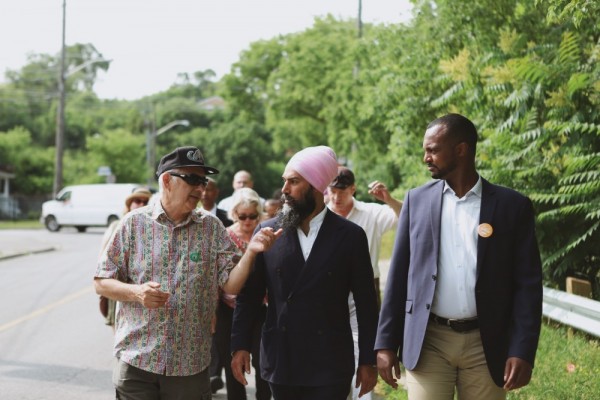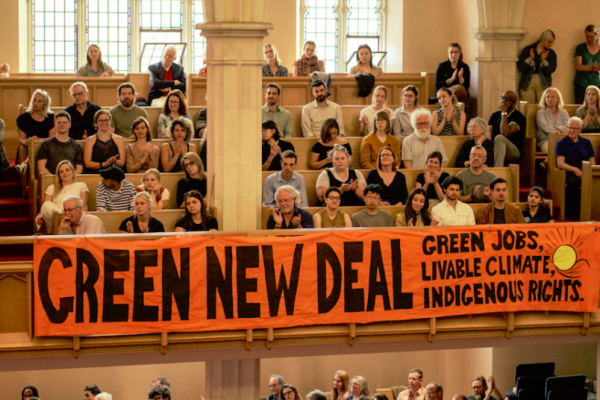From Clayoquot Sound to Fairy Creek: What have we learned?
History is repeating itself while the world burns, oceans rise and irreplaceable ancient forests disappear
Canadian PoliticsEnvironmentIndigenous PoliticsSocial Movements

Forest defenders sit at the foot of an old-growth tree in Fairy Creek, BC. Photo by @Focus.wandering/Instagram.
Twenty-eight years ago, I woke before dawn in a rain-sodden tent within a vast clearcut known as the Black Hole. I was surrounded by a small city of tents constituting the Clayoquot Peace Camp, a few kilometres inland from Vancouver Island’s rugged western edge. Each tent rustled with groggy campers unzipping rainflies and stumbling out into the dark at 4:00 am. We piled into a bus and miscellaneous vehicles, and were driven to Kennedy Lake bridge to form that day’s blockade line.
When the rumble of logging trucks could be heard in the distance, those risking arrest spread themselves across the road, holding hands in the hammering rain. The rest of us stood off to the side to bear witness, or in my case take notes and photos for the story I would later be filing. I tried to wrap my Nikon in a plastic bag with a rubber band holding it snug around the lens. But the camera was permanently damaged by the relentless wet. There’s a reason these are called rainforests.
From across Canada and around the world, 12,000 people flocked to Clayoquot Sound in 1993 to join the protest against industrial logging of irreplaceable ancient forests. Some 856 people were arrested, making it the largest peaceful blockade in Canadian history—a record that has since been broken by the ongoing blockades today at BC’s Fairy Creek, where more than 1,100 people have been arrested since May.
Three decades later, I am once again covering the clearcutting of Vancouver Island’s dwindling ancient forests. This time it’s the old-growth forests of Fairy Creek and adjacent watersheds, to the south of Clayoquot Sound. This is unceded land of the Pacheedaht, Ditidaht and Huu-ay-aht First Nations.
The provincial government responsible for the current logging has changed. But it is still an NDP government, as was the case for Clayoquot Sound in 1993. And it is still generating international headlines and outrage as the rest of the climate-changed world watches agape while BC eradicates trees and complex ecosystems one thousand years in the making.
On the Fairy Creek front, a story of rags to riches then back to rags unfolded in the space of ten days recently in BC courtrooms. After one year of blockades to forestall logging at Fairy Creek and the surrounding land, the blockaders celebrated a short-lived judicial victory last month.
On September 28, BC Supreme Court Justice Douglas Thompson ruled against the Teal Jones logging company by refusing to extend the company’s injunction against protestors. The injunction is the tool the company uses to enlist RCMP to arrest and remove blockaders.
Justice Thompson’s verdict was a major coup and vindication for the non-violent forest defenders at Fairy Creek. It was also a scathing indictment of the RCMP.
Over the months, eyewitness accounts and video evidence have revealed a pattern of RCMP brutality and injury toward the Fairy Creek protestors. There have been broken bones, concussions, police helicopters trying to pluck tree-sitters from great heights. Police have pulled off protestors’ COVID masks before pepper spraying their faces. They have dragged women by the hair. Arresting officers are wearing the “thin blue line” patch, a symbol that has been appropriated by white supremacists and disallowed in RCMP directives. There has also been evidence that Indigenous and non-white protestors are receiving rougher treatment from the RCMP than white activists at the blockades. Arresting officers have failed to wear identification, and have illegally barred journalists from witnessing arrests. RCMP have unlawfully seized and destroyed vehicles, tents, sleeping bags, food and more.
Much of this police misconduct, executed under court authority of the injunction, was cited by Justice Thompson in his reasons for denying Teal Jones an extension to their injunction against the protestors.
“[M]ethods of enforcement of the court’s order have led to serious and substantial infringement of civil liberties, including impairment of the freedom of the press to a marked degree,” Justice Thompson said.
In essence, a BC Supreme Court judge ruled that, because the RCMP behaved like jack-booted goons, thereby undermining the court’s reputation, Teal Jones would no longer be able to use the RCMP as the company’s private hit squad at taxpayer expense (policing at Fairy Creek has already cost millions of dollars).
The injunction was dead. The RCMP violations were exposed. The blockaders rejoiced.
“We call on politicians and decision-makers to step up and fulfill their political obligation to protect ancient old-growth forests,” Rainforest Flying Squad spokesperson Kathleen Code said the day of the verdict.
To date, Premier John Horgan has refused to place a moratorium on all old-growth logging in British Columbia, even though such a recommendation was made by the Old-Growth Strategic Review panel, and supported by the Union of BC Indian Chiefs.
Ten days later, on October 8, the victory evaporated when a BC Court of Appeal judge handed Teal Jones a temporary injunction to tide the company over until November 15 when the company’s formal appeal will be heard on their application for an ongoing injunction. In the meantime, RCMP are back at the blockades, and Teal Jones is cutting trees.
For those who lived through BC’s legendary War in the Woods nearly 30 years ago at Clayoquot Sound, the blockades and mass arrests at Fairy Creek are indeed a déjà vu experience. The question is: Why is this still going on? Why is history repeating itself while the world burns, oceans rise and irreplaceable ancient forests disappear? What will it take to change the script?
“We are not sufficiently understanding the root causes of the multiple crises facing us,” says climate educator Maria Vamvalis in Toronto. “The logics of separation, supremacy, extractivism and foreclosures on the commons underlie our economic and education systems. Disrupting these logics and regenerating Indigenous knowledges, worldviews and perspectives in tandem with wisdom traditions and scientific understandings that emphasize the deep interconnectedness of reality are necessary to gain a more holistic and restorative approach,” she explains.
But do we have enough time to disrupt these logics through the educational system?
Electoral politics certainly does not appear to hold the key. Past and present ecological plunder in BC has been authorized, funded and overseen by NDP governments. And the NDP appears to be the most left and ecologically minded option that can form government in this province. An NDP minority government with Greens holding the balance of power, if Greens would actually exercise that power, can always be hoped for. But with the NDP’s current majority government, BC isn’t due for another election until 2024.
“The current government is the last that will have the chance to really protect what’s left of the irreplaceable forests in BC,” writes Torrance Coste in a recent report from the Wilderness Committee, where he is National Campaign Director. “And of the most productive old-growth forests with the biggest trees, only 415,000 hectares remain. That’s less than one per cent of BC’s total forested area,” says Coste.
Yet despite government promises to place a moratorium on all old-growth logging in the province, the government has protected some old-growth but is continuing with the familiar talk-and-log approach on the rest.
Consequently, an increasing number of citizens are choosing to follow Thoreau’s advice to “Cast your whole vote, not a strip of paper merely, but your whole influence.” They are lacing up their boots and heading out the door to become a human shield for irreplaceable components of our biosphere under assault.
Extinction Rebellion staged a Vigil for Old Growth Ecosystems in front of the Nanaimo courthouse in September, while Fairy Creek arrestees stood trial inside. Supporters demonstrated at a makeshift gallows, each standing on a melting block of ice representing the climate crisis. Photo by Kim Goldberg.
Pacheedaht elder Bill Jones addresses a “Return to Eldership” gathering of land defenders in Fairy Creek. He has invited supporters to come to the territory and join him in this work. Photo by @Focus.wandering/Instagram.
The reaction at the blockade when the news came down on September 28 that the BC Supreme Court had ended the injunction. Photo courtesy the Fairy Creek Blockade Facebook page.
Kim Goldberg is a Nanaimo-based writer and author of eight books. She was the BC current affairs columnist for Canadian Dimension from 1990-2002. Follow her on Twitter @KimPigSquash.










